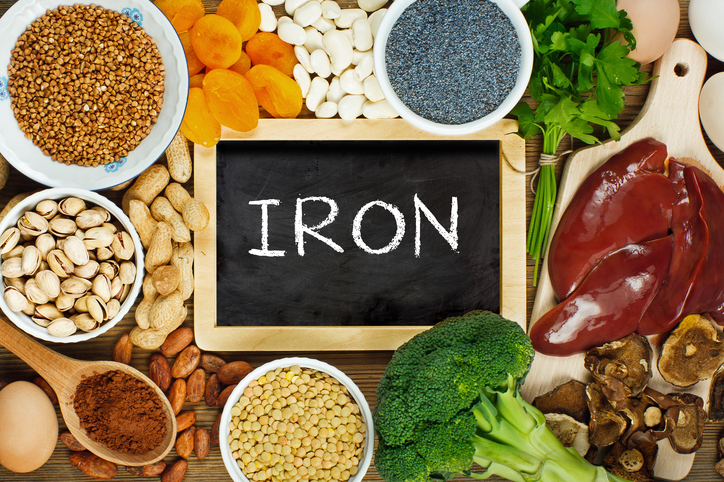
Iron overload is an excess (too much) iron in the body. Excess iron in vital organs, even in mild cases of iron overload, increases the risk for liver disease (cirrhosis, cancer), heart attack or heart failure, diabetes mellitus, osteoarthritis, osteoporosis, metabolic syndrome, hypothyroidism, hypogonadism, numerous symptoms and in some cases premature death.
Here are the facts you need to know about this potentially-dangerous condition:
What is it?
Iron overload is characterized by an elevated serum ferritin with a normal transferrin-iron saturation percentage. People with iron overload syndrome will likely also have an elevated GGT (liver enzyme) possibly due to a fatty liver. Individuals with DIOS are helped by phlebotomy, diet and exercise. The FeGGT test is helpful in determining the iron status and GGT status.
Iron mismanagement resulting in overload can accelerate such neurodegenerative diseases as Alzheimer’s, early-onset Parkinson’s, Huntington’s, epilepsy and multiple sclerosis.
How do you get it?
Iron overload can be inherited (genetic) or acquired by receiving numerous blood transfusions, getting iron shots or injections, or consuming high levels of supplemental iron. Some of the genetic disorders that result in iron overload include are hereditary hemochromatosis (all types), African iron overload, sickle cell disease, thalassemia, X-linked sideroblastic anemia, enzyme deficiencies (pyruvate kinase; glucose-6-phosphate dehydrogenase) and very rare protein transport disorders aceruloplasminemia and atransferrinemia.
None of these conditions should be confused with polycythemia vera (PV), which is not an iron disorder, but...
...a condition where the bone marrow produces too many blood cells (red, white and platelet). People with PV have abnormally high hemoglobin and are at risk for a stroke and progressing to acute myelogenous leukemia (AML). Part of the therapy for PV is phlebotomy.
What are the symptoms?
Symptoms resulting from iron overload include:
▪ Chronic fatigue
▪ Joint pain
▪ Abdominal pain
▪ Liver disease (cirrhosis, liver cancer)
▪ diabetes mellitus
▪ irregular heart rhythm
▪ heart attack or heart failure
▪ skin color changes (bronze, ashen-gray green)
▪ loss of period
▪ loss of interest in sex
▪ osteoarthritis
▪ osteoporosis
▪ hair loss
▪ enlarged liver or spleen
▪ impotence
▪ infertility
▪ hypogonadism
▪ hypothyroidism
▪ hypopituitarism
▪ depression
▪ adrenal function problems
▪ early onset neurodegenerative disease
▪ elevated blood sugar
▪ elevated liver enzymes
▪ elevated iron (serum iron, serum ferritin)
Treatment Options
The treatment for iron overload is iron reduction therapy. A person's hemoglobin is key in the physician's decision of iron reduction therapy. If the patient's hemoglobin level is sufficient to tolerate blood removal (phlebotomy), the doctor can provide either an order for therapeutic phlebotomies or can recommend that a patient routinely donate blood. When a patient's hemoglobin is too low for phlebotomy, iron reduction will likely require iron-chelation, which is the removal of iron using specific drugs. In some situations the physician may use a combination of these two therapies.








